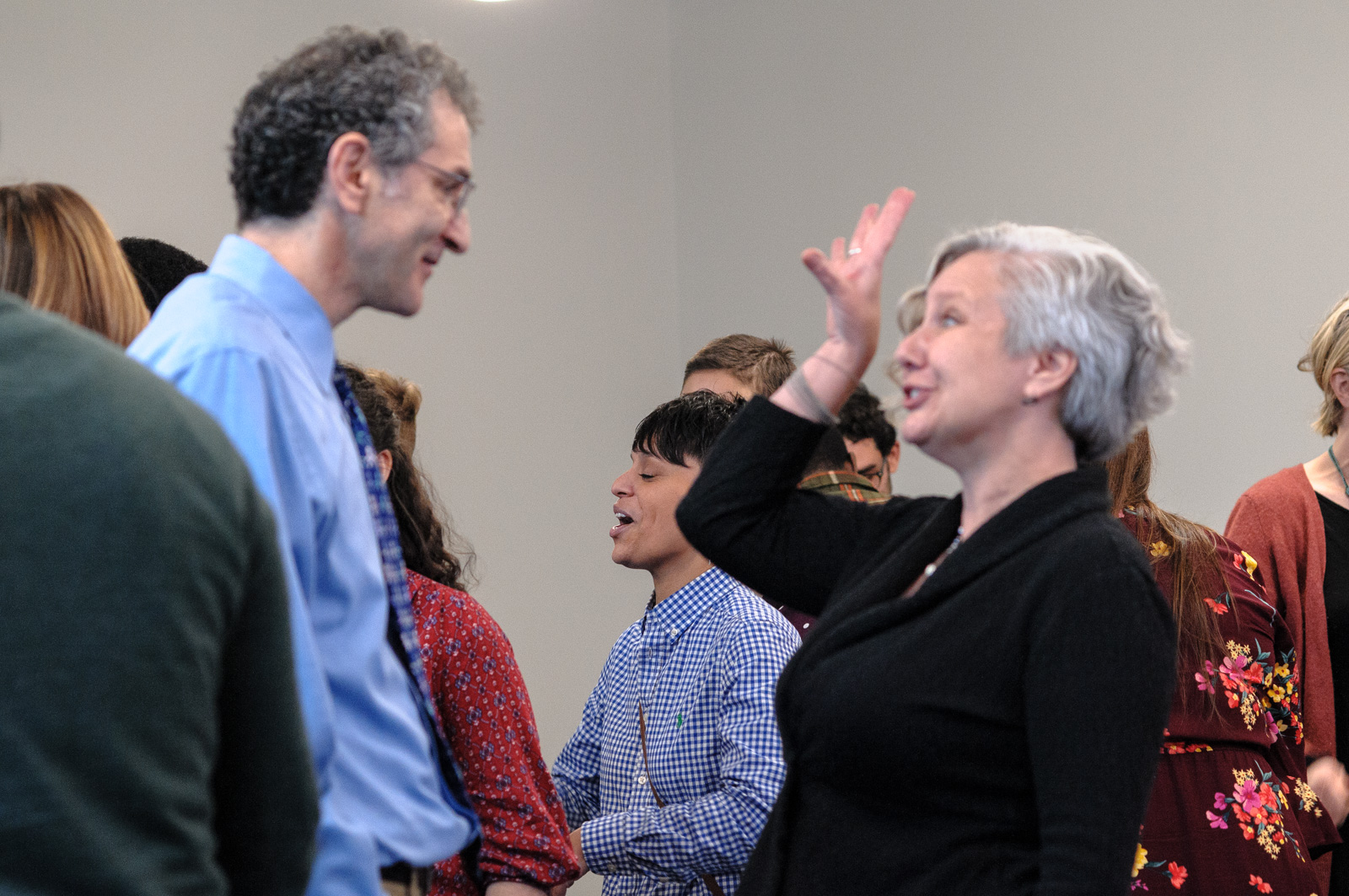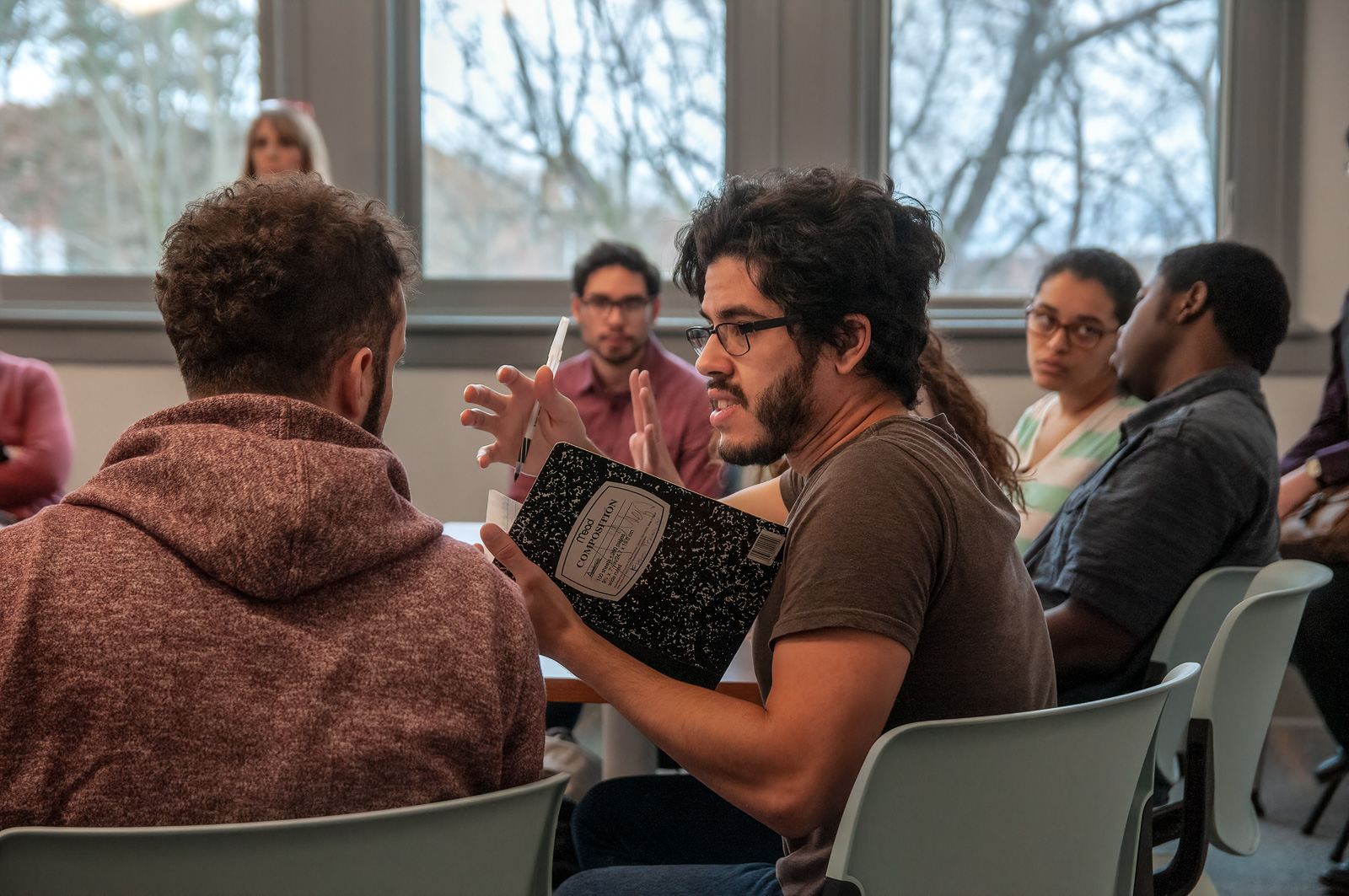Techniques & Activities
Our programs can consist of any combination of techniques, activities, and interactive scenes. Below are some of the techniques and activities we use to facilitate learning, discussion and problem-solving.
Impact performance educators in rehearsal, using Image Theatre to explore the topic of “Diversity & Inculsion in the Workplace.”
Image Theatre
Participants work with our Performance Educators to create frozen images, or tableau, that depict ideas, relationships and situations relevant to the topic we’re exploring. We use these images as a springboard for discussion, inviting participants to alter them in order to illuminate multiple perspectives, examine behaviors and consequences, and identify concrete steps toward positive change.
Impact performance educators using “Fluid Sculptures” to play back a program participant’s story.
Fluid Sculptures
Impact facilitators pose a few simple questions (e.g., “What kind of challenges did you face at work this week?”) and invite participants to respond by sharing short fragments of personal experiences (e.g., “I had a frustrating experience in a team meeting. I was sharing an idea for a new project and one of my colleagues kept interrupting and making jokes.”). Our Performance Educators immediately “play back” what they’ve heard, using sound and movement to create brief theatrical pieces that capture the essence of the teller’s experience. This technique provides a non-threatening, entertaining way for participants to begin sharing thoughts and feelings, making connections, and building empathy.
A performance educator, answering a question “in character” during hot-seating.
Hot-Seating
After watching a scripted scene, participants are invited to interact with the characters in order to learn more about their thoughts, feelings, and motivations. Our experienced facilitators thoughtfully guide participants to examine behaviors and consequences, uncover assumptions, and identify behaviors that are more constructive, productive and inclusive.
After watching a scene on sexual harassment, a program participant shares some thoughts on another way to handle the situation.
Play/Replay
We “rewind” an interactive scene and play it again, this time inviting participants to stop the action in order to suggest, and even “try out,” different ways to handle the situation by stepping into the scene and role playing alternative problem solving strategies with our performance educators.
Program participants involved in a role play about parent-teacher communication.
Concentric Circles
A whole-group role play activity which allows participants to role play the same situation with different partners in order to hear different perspectives and understand the issue from several points of view.
Impact directors reviewing Shared Agreements at the beginning of a program.
Shared Agreements
We use shared agreements to help us create an inclusive training environment where participants are encouraged to take risks and share honest thoughts and feelings.
Performance educators and program participants engaged in Creative Introductions.
Creative Introductions
A fun, “on your feet” activity to energize the space and stimulate discussion about making assumptions and how being uncomfortable can impact the way we interact with, and relate to others.
Participants sharing things they have in common.
Commonalities
An icebreaker-type activity that asks participants to identify things they have in common and reflect on how doing so can change the feeling in the room. This activity illuminates the importance of making connections.
Small Group Discussion/Pairs
Many people report that they don’t have opportunities to share honest thoughts and feelings with their colleagues. Small group discussion encourages personal reflection and provides opportunities for participants to problem solve together and hear multiple points of view.
Storytelling activity
Storytelling
In pairs, the “teller” shares a short personal story that’s connected to the topic we are addressing, while the “listener” receives the story without interrupting. They switch roles and then we debrief together with a discussion about the importance of listening and being heard.
Participants sharing out at the end of a program.
Call to Action
We end our programs by asking participants to identify concrete steps they can take to move their group or organization in a positive direction. This can include anything from being more conscious of the assumptions they make, to interrupting harmful comments and behaviors, to reviewing policies, creating work groups, and/or seeking guidance from colleagues or supervisors.











